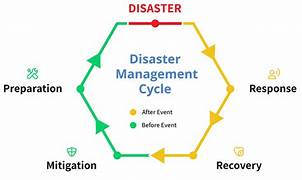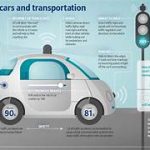The Use of AI in Disaster Management and Response
In recent years, artificial intelligence (AI) has emerged as a powerful tool across various sectors, including disaster management and response. Natural and human-made disasters are becoming more frequent and severe due to factors such as climate change, urbanization, and geopolitical tensions. In this context, the integration of AI into disaster management systems has the potential to save lives, mitigate damage, and streamline recovery efforts. From predicting disasters to coordinating responses, AI is transforming the way we prepare for and handle crises.
Predictive Analytics and Early Warning Systems
One of the most critical aspects of disaster management is the ability to predict and prepare for potential catastrophes. AI-driven predictive analytics leverages vast datasets, including historical disaster data, satellite imagery, and weather patterns, to forecast potential hazards. For instance, machine learning models can analyze weather data to predict hurricanes, floods, and heatwaves with remarkable accuracy.
A notable example is the use of AI in earthquake prediction. While predicting the exact time and location of earthquakes remains challenging, AI algorithms are improving the ability to analyze seismic activity patterns and identify precursors to major events. Similarly, AI-powered systems can provide early warnings for tsunamis by analyzing oceanographic data in real-time.
These early warning systems give governments, communities, and organizations valuable time to prepare and evacuate, reducing the potential loss of life and property.
Real-Time Monitoring and Damage Assessment
During a disaster, timely and accurate information is crucial. AI plays a pivotal role in real-time monitoring and damage assessment, enabling responders to prioritize resources effectively. Drones equipped with AI-powered cameras and sensors can survey affected areas, capturing high-resolution images and videos. These datasets are then analyzed using computer vision algorithms to identify damaged infrastructure, stranded individuals, or areas at risk of further collapse.
For example, after hurricanes or wildfires, AI-driven tools can process satellite imagery to assess the extent of the damage and provide actionable insights. This information helps authorities allocate resources efficiently and plan rescue operations. Moreover, AI systems can analyze social media posts, emergency calls, and text messages to identify hotspots of distress and direct emergency services accordingly.
Improved Communication and Coordination
Effective disaster response requires seamless communication and coordination among multiple stakeholders, including government agencies, non-profits, and local communities. AI-powered platforms facilitate this by centralizing information and enabling real-time decision-making.
Chatbots and virtual assistants, powered by natural language processing (NLP), can serve as communication hubs during disasters. These tools provide updates, answer frequently asked questions, and guide affected individuals to safety. For instance, the Red Cross and other organizations have deployed AI chatbots to assist during emergencies, ensuring that critical information reaches those in need.
Additionally, AI enhances coordination by optimizing logistics. Algorithms can analyze transportation routes, weather conditions, and resource availability to ensure timely delivery of aid. By identifying the fastest and safest routes, AI reduces delays and ensures that relief supplies reach affected areas efficiently.
Disaster Recovery and Resilience Building
The role of AI extends beyond immediate response to long-term recovery and resilience building. AI systems can help communities rebuild smarter and stronger by analyzing data on vulnerabilities and proposing strategies to mitigate future risks.
For example, AI can assist in urban planning by identifying flood-prone areas and recommending infrastructure improvements, such as better drainage systems. Similarly, machine learning models can evaluate the impact of past disasters to refine preparedness plans and optimize resource allocation.
In agriculture, AI helps farmers recover from disasters by analyzing soil conditions, weather forecasts, and crop data to provide tailored recommendations. This reduces the economic impact of disasters on vulnerable communities and enhances food security.
Ethical Considerations and Challenges
While the potential of AI in disaster management is immense, its implementation comes with ethical considerations and challenges. One significant concern is data privacy. AI systems often rely on sensitive data, such as location information and personal communications, raising questions about consent and data protection.
Another challenge is the risk of algorithmic bias. If AI models are trained on biased or incomplete datasets, their predictions and recommendations may disproportionately affect certain communities. Ensuring that AI systems are transparent, fair, and inclusive is crucial to building trust and achieving equitable outcomes.
Moreover, the reliance on AI in disaster management necessitates robust cybersecurity measures. As disasters often disrupt infrastructure, protecting AI systems from cyberattacks is essential to ensure their reliability during crises.
Case Studies of AI in Action
- Cyclone Prediction in India: The Indian Meteorological Department has integrated AI into its cyclone prediction systems, significantly improving the accuracy of forecasts. During Cyclone Fani in 2019, AI-enabled early warnings facilitated timely evacuations, saving thousands of lives.
- Wildfire Management in the USA: AI systems, such as IBM’s Watson, analyze weather data, vegetation density, and historical fire patterns to predict wildfire risks. These insights help firefighting teams prepare and deploy resources effectively.
- Flood Monitoring in Bangladesh: Google’s AI-powered flood forecasting system provides real-time updates to communities in flood-prone areas. By integrating satellite imagery and hydrological data, the system delivers precise predictions and minimizes the impact of floods.
Future Prospects
As AI technologies continue to evolve, their applications in disaster management are likely to expand. Innovations such as autonomous robots, advanced drones, and AI-powered wearables promise to enhance disaster response capabilities further. For instance, autonomous robots equipped with AI could navigate hazardous environments to deliver aid or conduct search-and-rescue missions.
Moreover, advancements in machine learning and data analytics will enable more accurate and granular predictions, empowering communities to prepare for disasters more effectively. By integrating AI with emerging technologies such as the Internet of Things (IoT) and 5G, disaster management systems will become even more interconnected and responsive.
Conclusion
The integration of AI into disaster management and response represents a paradigm shift in how we address crises. From predictive analytics to real-time monitoring, AI enhances every phase of disaster management, saving lives and reducing economic losses. However, realizing the full potential of AI requires addressing ethical concerns, ensuring data security, and fostering collaboration among stakeholders.
As the world faces increasing challenges from natural and human-made disasters, AI stands as a beacon of hope. By leveraging its capabilities responsibly, we can build a more resilient and prepared global community.


